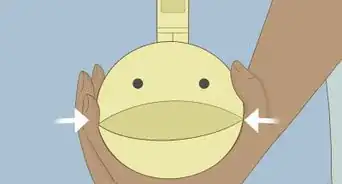wikiHow is a “wiki,” similar to Wikipedia, which means that many of our articles are co-written by multiple authors. To create this article, 29 people, some anonymous, worked to edit and improve it over time.
This article has been viewed 235,209 times.
Learn more...
Trumpets, trombones, tubas and other brass instruments have a mouthpiece that is inserted in one end. This small part of the instrument can easily become bent, dented or otherwise damaged. If the mouthpiece is forced in, it might not come out. There are some simple things you can do to remove a stuck mouthpiece and to ensure it doesn’t become stuck again.
Steps
Trying Simple Techniques
-
1Pull the mouthpiece with your hand. If the mouthpiece is stuck, you can try to grip it with your hand and give it a little counter-clockwise twist. If it is not stuck too much, you will be able to pull it out with your hand.
-
2Tap at the mouthpipe with a wooden mallet. Use a wooden mallet and give several little, fairly light taps around the mouthpipe (the insertion point where the mouthpiece goes in). This might help to loosen the connection between the mouthpiece and the instrument.[1]Advertisement
-
3Tie a loop of rope around the mouthpiece. Hold the instrument in one hand and hold the ends of the rope in your other hand. Give the rope a yank to see if the mouthpiece will come out.[2]
- You can also wrap something around the rope, such as a mallet or other object, that will give you more leverage in pulling on the rope to remove the mouthpiece.
- If the mouthpiece pops out, it might go flying across the room and hit the floor, putting it at risk for further damage.
Using a Hot and Cold Water Method
-
1Place your instrument over a sink. You will need access to very hot running water. Have a towel ready as well, in case the water starts to drip over the instrument too much as you’re working.
-
2Tie some ice cubes to the instrument with a wide rubber band. Using a wide rubber band, such as the kind that holds broccoli together, position ice cubes around the mouthpiece. They should touch the insertion point where the mouthpiece goes into the instrument. Let the ice cubes sit against your instrument for a few minutes to get the metal really cold.
-
3Start running very hot water over the mouthpipe. Run the water as close to the mouthpiece insertion point as you can get without melting the ice. As the hot water hits the mouthpipe, it will start to expand the metal slightly, while the cooling effect from the ice cubes will contract the mouthpiece metal. Keep the hot water running for a few minutes.
- Don't get the hot water on the lacquered (brass colored) part of the lead pipe. This will cause the lacquer to tarnish or even come off altogether.
-
4Turn off the water and pull out the mouthpiece. Take the instrument out of the sink. Wrap the rubber band around the mouthpiece as tightly as possible. Grab the mouthpiece firmly, using the rubber band as a sort of grip, and pull the mouthpiece out.
-
5Dry your instrument and store it. Dry off your instrument carefully with a soft cloth. After making sure there is no moisture on the outside of your instrument, store it carefully in its case.
-
6Inspect the mouthpiece for damage. The mouthpiece end that inserts into your instrument should be round and clean. There should be no rust or other debris on it. Look for dents and an oval or squashed shape by holding the mouthpiece at eye level or comparing it to an undamaged mouthpiece.
-
7Use a mouthpiece trueing tool. If your mouthpiece is misshapen at all, use a trueing tool to return it to its correct shape. This tool looks like a skinny T and has a somewhat pointed end. To use, insert the tool into the end of your mouthpiece. Tap it very gently with a rubber mallet (not a hammer!). The tool will force the mouthpiece end to become rounded.[3]
Using a Mouthpiece Puller
-
1Buy or borrow a mouthpiece puller. A mouthpiece puller is a handy device that is solely intended to pull stuck mouthpieces out of brass instruments. They can be used for small and large instruments, so they are versatile enough to use on trumpets, trombones, tubas and so on. These are available online or in music stores. The most common mouthpiece pullers are:
- Bobcat Mouthpiece Puller: This is the least expensive, costing about $40. This one has two screws that need to be tightened simultaneously when using it.
- Ferree G88 Mouthpiece Puller: This is a more expensive option, costing about $100. It is bulkier, but it only has one T handle that needs to be screwed in when being used.
- DEG Magnum Mouthpiece Puller: This is usually the most expensive puller, costing about $130. It is very similar to the Ferree.
-
2Place your instrument on a table. You should have a level working space. Be careful to not put it near the edge where it can fall. Alternately, you can do this on the floor, especially if you have a large instrument.
- You may want someone to help you by gently holding the instrument still while you operate the mouthpiece puller.
-
3Align the mouthpiece puller on the mouthpiece. One end of the mouthpiece puller will go against the instrument at the point where you insert the mouthpiece. There are usually grooves or other U-shaped areas where your mouthpiece will fit into the puller.
- Read the manufacturer’s instructions to ensure you are using the mouthpiece puller correctly.
-
4Tighten the mouthpiece puller. Depending on the type of puller you are using, tighten the screws (on the Bobcat mouthpiece puller) or the T handle (on the Ferree G88 mouthpiece puller). Turn the screws evenly, steadily and slowly. The mouthpiece should start to move out of the instrument.
-
5Remove the mouthpiece. Once the mouthpiece puller has loosened the mouthpiece, you should be able to gently twist and pull to get it free. It should come out smoothly.
- For mouthpieces that are really stuck, use a rubber mallet to tap the puller when it is tightened up. This might enable you to turn the screws a little more to help move the mouthpiece.[4]
-
6Inspect the mouthpiece for damage. The mouthpiece end that inserts into your instrument should be round and clean. There should be no rust or other debris on it. Look for dents and an oval or squashed shape by holding the mouthpiece at eye level or comparing it to an undamaged mouthpiece.
-
7Use a mouthpiece trueing tool. If your mouthpiece is misshapen at all, use a trueing tool to return it to its correct shape. This tool looks like a skinny T and has a somewhat pointed end. To use, insert the tool into the end of your mouthpiece. Tap it very gently with a rubber mallet (not a hammer!). The tool will force the mouthpiece end to become rounded.[5]
Asking for Help
-
1Never use pliers or other tools on your instrument. Pliers are the one of the worst tools to bring into contact with your instrument. They can scratch and bend your mouthpiece, and using them might even start to break apart your instrument at the mouthpipe.[6]
-
2Ask your band director for help. Most band directors are equipped with repair supplies to help fix minor instrument problems. They will likely have a mouthpiece puller that can be used.[7]
- Your band director can also inspect your mouthpiece to make sure its shape is correct.
-
3Ask an experienced brass instrument player for help. Someone who has been playing brass instruments for a long time will likely have more experience with removing stuck mouthpieces. Ask them for assistance in implementing the best techniques for removing your mouthpiece if it gets stuck.
-
4Take your instrument to a repair shop. Most music repair shops will use a mouthpiece puller or other mechanism to remove a mouthpiece. Often they will not charge for this service, since it’s a simple procedure and can be completed quickly. Call before you go to make sure they can pull out your mouthpiece for you.
- Ask the repair shop to clean your instrument and inspect your mouthpiece to ensure that its shape is correct.
Preventing a Mouthpiece from Getting Stuck Again
-
1Regularly inspect the mouthpiece for damage. The mouthpiece end that inserts into your instrument should be round and clean. There should be no rust or other debris on it. Look for dents and an oval or squashed shape by holding the mouthpiece at eye level or comparing it to an undamaged mouthpiece.
-
2Use a mouthpiece trueing tool. If your mouthpiece is misshapen at all, use a trueing tool to return it to its correct shape. This tool looks like a skinny T and has a somewhat pointed end. To use, insert the tool into the end of your mouthpiece. Tap it very gently with a rubber mallet (not a hammer!). The tool will force the mouthpiece end to become rounded.[8]
-
3Carefully insert the mouthpiece into your instrument. Give a gentle clockwise twist when inserting the mouthpiece. When removing the mouthpiece, give a counter-clockwise twist. It should not turn more than about a half of a rotation, if that. Never bang in the mouthpiece.
- Over time, the twisting will have a threading effect and make the mouthpiece less likely to be stuck.
-
4Properly store your instrument in its case. Always remove the mouthpiece before putting the instrument in its case. Place the instrument in the case properly. Do not put extra items like music or other items in the case where they don’t fit.
-
5Regularly clean your mouthpiece. Keeping your mouthpiece clean will help ensure that it fits properly and smoothly into your instrument. Wash it carefully with warm water and mild soap, drying it afterwards with a soft cloth. Periodically, apply a little dab of valve or key oil to the insertion end.[9]
-
6Don’t drop your mouthpiece on the ground. Dropping a mouthpiece on a hard surface such as tile or concrete is sure to dent or otherwise damage your mouthpiece. Even dropping a mouthpiece on carpet can risk damaging it. If you drop the mouthpiece, inspect it right away to ensure that it is still round. If it’s dented, use a trueing tool to reshape the insertion end.[10]
Community Q&A
-
QuestionMy mouthpiece is REALLY stuck, and it's burned off and the brass is twisted. What do I do?
 wikiHow ContributorCommunity AnswerTake it to a local music store -- they have special tools that can get it off.
wikiHow ContributorCommunity AnswerTake it to a local music store -- they have special tools that can get it off. -
QuestionWhat can I do if neither my band directer nor I have a mouthpiece puller? Neither of us can buy one.
 Community AnswerGo to a music store. They probably have one and will do it for free if you ask them.
Community AnswerGo to a music store. They probably have one and will do it for free if you ask them. -
QuestionI tried putting boiling hot water on the mouthpiece, and it didn't work, so I tried cold water and that didn't work either. It's REALLY stuck and I can't get it off! What can I do?
 Community AnswerGo ask your band director for a mouthpiece remover. If you do not have a band director, see if you can buy your own mouthpiece remover. It shouldn't cost too much, as it is literally two slabs of metal with screws. A good way to prevent this from happening in the future is to take apart you instrument and put it back in its case.
Community AnswerGo ask your band director for a mouthpiece remover. If you do not have a band director, see if you can buy your own mouthpiece remover. It shouldn't cost too much, as it is literally two slabs of metal with screws. A good way to prevent this from happening in the future is to take apart you instrument and put it back in its case.
References
- ↑ https://www.youtube.com/watch?v=QMasg73F38I
- ↑ https://www.youtube.com/watch?v=QMasg73F38I
- ↑ http://www.davidbaileymusicstudio.com/pdf/RepairProceduresHandbook.pdf
- ↑ https://www.youtube.com/watch?v=QMasg73F38I
- ↑ http://www.davidbaileymusicstudio.com/pdf/RepairProceduresHandbook.pdf
- ↑ https://www.nickrailmusic.com/t-trumpetcare.aspx
- ↑ https://www.nickrailmusic.com/t-trumpetcare.aspx
- ↑ http://www.davidbaileymusicstudio.com/pdf/RepairProceduresHandbook.pdf
- ↑ http://campus.murraystate.edu/staff/scott.thile/brass_care.html
About This Article
Don’t worry if your mouthpiece is stuck in your brass instrument, since there are a few ways you can loosen it. Try tapping the mouthpiece where it connects to the trumpet with a wooden mallet and pulling it out. You can also tie a rope around the mouthpiece to help you remove it. If that doesn’t work, try using heat to loosen it. First, tie an ice cube around the bottom of the mouthpiece with a wide rubber band. Then, hold the mouthpiece under running hot water for a few minutes. Just be careful not to get hot water on the brass parts of your instrument, since this can damage their finish. The changes in temperature should make the mouthpiece easier to remove. For more tips, including how to prevent your mouthpiece from getting stuck again, read on!
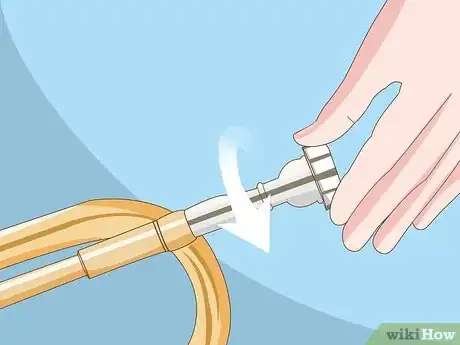



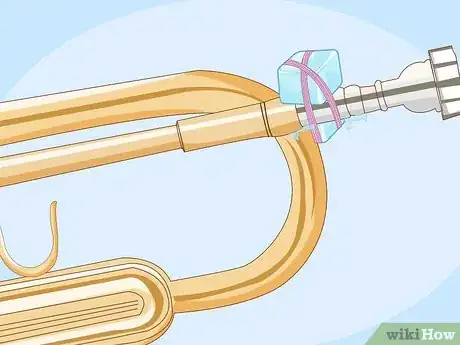
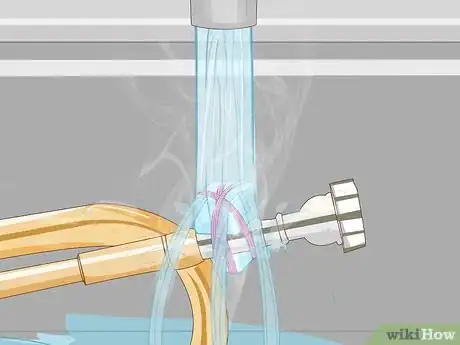







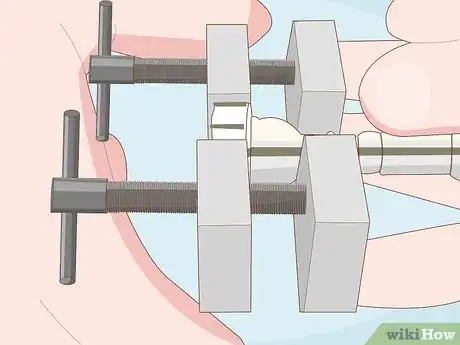
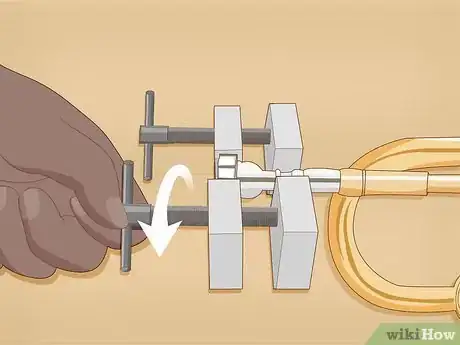


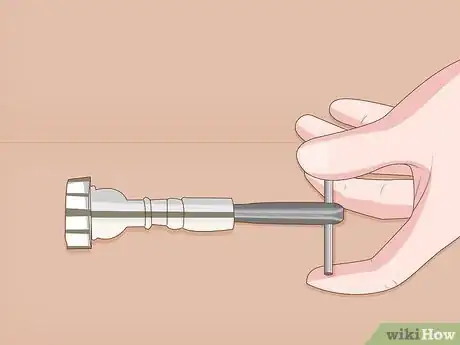




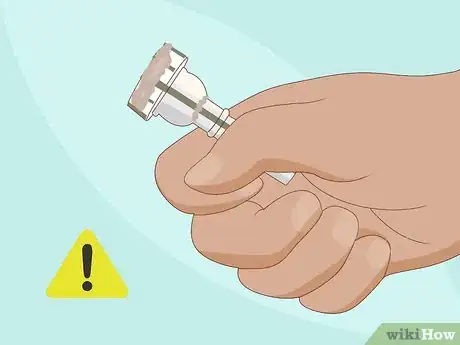



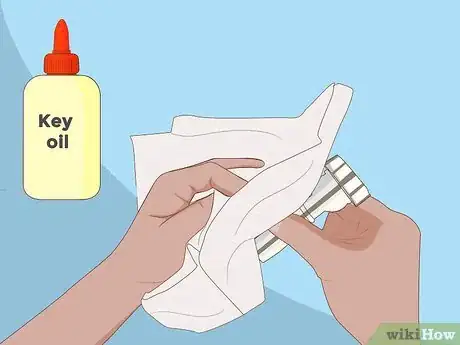
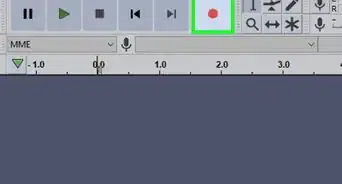




-Step-17-Version-4.webp)

